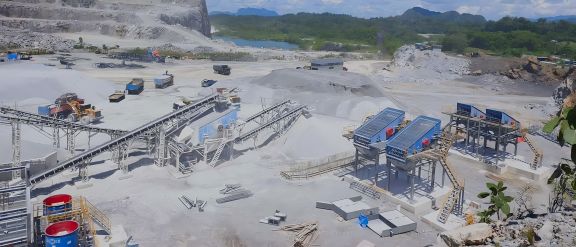


Discover strategies to optimize stone crusher plant usage for sustainable urban development and efficient construction practices.
Urban development has become a pressing priority as cities continue to expand and evolve. The demand for infrastructure, housing, and roads necessitates the efficient use of resources, including raw materials sourced from stone crusher plants. Optimizing these plants is crucial not only for cost-effectiveness but also for minimizing environmental impacts. As urban planners and construction managers navigate the complexities of modern development, understanding how to maximize the utility of stone crusher plants is imperative for sustainable growth.
Stone crusher plants serve a fundamental role in urban infrastructure by providing the aggregates necessary for construction. These aggregates—gravel, sand, and crushed stone—are vital for concrete, asphalt, and various building materials. The efficiency of these plants directly influences project timelines and budgets. By optimizing their operations, urban developers can ensure a steady supply of high-quality materials, which is paramount for the structural integrity and longevity of urban projects.
The operation of stone crusher plants is often scrutinized for its environmental ramifications. Dust emissions, noise pollution, and landscape disruption are significant concerns. However, by implementing advanced technologies and best practices, plants can mitigate these impacts. For instance, using dust suppression systems and noise barriers can significantly reduce the ecological footprint of these operations. Moreover, adherence to environmental regulations not only enhances public perception but can also lead to financial incentives for sustainable practices.
Integrating modern technology into stone crusher operations is a catalyst for optimization. Automation, data analytics, and machine learning can streamline processes, reduce downtime, and enhance product quality. For example, predictive maintenance powered by IoT sensors can preemptively address equipment failures, minimizing disruptions. Furthermore, employing advanced crushing techniques can improve yield and reduce waste, ensuring that the plants operate at peak efficiency.
The geographical positioning of stone crusher plants plays a pivotal role in their efficiency. Proximity to urban development sites reduces transportation costs and time, which is critical in fast-paced construction environments. Additionally, optimizing logistics—such as establishing efficient supply chains and utilizing local materials—can further enhance the operational effectiveness of these plants. By analyzing traffic patterns and site accessibility, planners can determine the most strategic locations for these facilities.
In the context of urban development, the optimization of stone crusher plant usage is not merely a logistical challenge; it is an essential component of sustainable construction practices. By understanding the integral role these plants play in infrastructure, addressing environmental concerns, and implementing strategic optimization strategies, urban developers can significantly enhance project efficiency and sustainability. The future of urban development hinges on the ability to harmonize construction practices with ecological preservation, and stone crusher plants are at the forefront of this critical endeavor.
